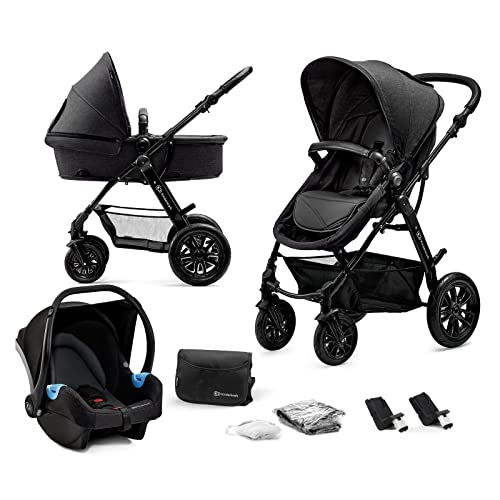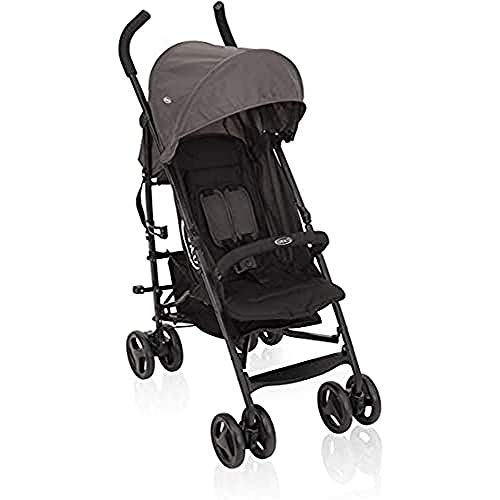9 . What Your Parents Taught You About Pushchairs From Birth
페이지 정보
작성자 Harriett 댓글 0건 조회 57회 작성일 24-05-23 20:52본문
 Choosing Pushchairs from birth For Your Baby
Choosing Pushchairs from birth For Your BabyA stroller, buggy, or pushchair is a way to transport children. Prams have a carry cot, bassinet or frame to connect to a the cot. Newborns should lie flat.
When your baby can sit up and has a good head-control, you can use the stroller with seats that face away or toward you. Many pushchairs come with useful features, such as swivel wheel or enclosed carrycots, and can be used as 3 in 1 systems.
Rear-facing
There are a variety of choices to pick from when you are deciding on the right pushchair for your new baby. These include prams pushchairs, buggies, and strollers. They may sound similar however there are some important distinctions between them. A pram is typically designed to lie-flat while a pushchair allows a seated position. Some babies can fit in both, while others need to use a carrycot until their heads and necks are strong enough to be supported in a seated position.
The majority of experts agree that it is ideal to use a pushchair for infants with the parent facing forward for babies up to a couple of months old. Babies enjoy looking at their parents and the emotional connection this provides. This eye-contact is essential for their emotional development as they learn to process the information around them. As they watch their parents interact with one another, they also begin to develop language skills.
When babies are able to see their parents they feel more secure and confident. They are aware that they can rely on their parents to help them navigate and safeguard them. This early trust can help a child grow in confidence and feel well-being when they reach the age of toddlers and begin to explore the world.
A parent-facing pushchair allows you to observe your child while they are in their seat. You can quickly check if your baby is comfortable and content. Also, Pushchairs From Birth you can make sure that their hat is not over their eyes and that the wind isn't blowing directly into their face. Babies who are able to see their parents' faces are also more likely to sleep because they are reassured by their familiar faces.
There are plenty of options when you wish to keep your child in a pushchair facing the parent for as long as possible. Some are designed to change between forward-facing and parent-facing while others include an adjustable footmuff that can be extended for cold weather or a rain cover to keep the elements out. The Eezy S Twist+2 is a fantastic example of a multi-purpose pushchair that can be changed from a parent-facing to forward-facing seat unit at the push of an lever. It can be fitted with a Cocoon S Car Seat, Cot S Carrycot, or an additional carrycot to create a 4-in-1 travel system.
Forward-facing
A forward-facing pushchair lets babies to explore their surroundings and take in the sights, smells, and sounds around them. They also get to see their parents, which is important for the social development of your baby. About six months old, based on their development milestones and ages the majority of babies are able to move from a newborn carrycot or pram to a pushchair facing forward. This is when they will have acquired enough head and neck control to be able to safely sit in a forward-facing position.
Research suggests that when babies are facing their parents from the front of a pushchair they are more likely to speak back and have a reduced heart rate which suggests they feel less stressed. They are also more engaged in what is happening around them and their parents which can help stimulate their minds and increase their language skills. Parents are more likely to talk to their children when they are in eye contact with them. This is comforting and reassuring to their children.
There are numerous advantages to using a front-facing pushchair from the moment of birth, such as being able to use it for longer walks. They will be able to take your child shopping or for other activities that require walking. A stroller or pushchair can also allow your child to participate in the same activities as their older siblings, which will aid in building their self-esteem and confidence.
Choose a pushchair that has various accessories, including an armband, a footmuff, and pram blanket. If the weather is hot the hood and a parasol can help safeguard your baby. Choose a parasol which has an SPF or UV 50+ rating, and ensure that it's made to fit your black pushchair and is easy to attach. Certain brands offer a range of accessories. Some are available in a set with the pushchair, while others can be purchased separately.
Many pushchairs can be converted to double by adding a second seat unit or carrycot. This is especially beneficial for families expecting the birth of a second child within a short time after the first. Some models come with everything you need for the conversion, while others have a separate converter kit.
All-terrain
If you live on an unpaved road, take a walk in the woods, or go hiking frequently, then you'll need a pushchair designed for rough paths and rough terrain. All-terrain strollers are built to be able to handle any terrain. They come with features such as suspension that cushions bumpy rides to ensure your child won't get shaken up. The seat is tilted to evenly distribute the force of the rough terrain across your child's head and neck.
Most strollers for all terrains are three-wheelers with the front wheel that can be locked and swiveled into place to provide maximum maneuverability. This is essential on rough surfaces. They also have larger tires than your average pushchair, meaning they can handle more rough terrain and have the most comfortable ride for your child.
Another thing to think about when choosing an all-terrain pushchair is whether the wheels are filled with air or foam. air-filled tyres offer more comfort on rough terrain however they could also puncture more easily if they hit something sharp. The tyres that are filled with foam are more durable and less likely to puncture, and this is a better option for an all-terrain pushchair.
Some all-terrain strollers can be converted to single or double mode to accommodate families that are growing. Other models can be used as travel systems using car seat adaptors. They are great for parents who are new. Some models, like the Out 'n' About Nipper are suitable for pushchairs from birth babies due to their flat seats, and the fact that you can attach a carrycot (although this is not suitable for sleep overs).
The Nipper is equipped with a range of accessories for pushchairs including a footmuff, and a raincover. It's easy to store since it folds compactly with one hand and can stand on its own when folded. It comes with a 360-swivel lockable wheel and foam-filled, never-flat tyres.
Weight
Choosing the right pushchair is a major choice that will affect the how you travel with your infant. The best model will allow your child to grow and develop in comfort while ensuring that you enjoy all the family adventures to come. This is a significant purchase, so be sure you pick one that is suitable for your lifestyle and budget.
Understanding the distinctions between a buggy, a travel system and a single pushchair is the first step. This guide explains the terminology to help parents to determine what is the best choice for their new baby.
A pram, as the name suggests, is made for newborns and babies between six and six months old. It lets the baby lie flat while asleep, which is good for their back development. Some models also have an attachment for a bassinet, which can be used for the initial few months, giving your baby a secure and comfortable environment.
You should be aware that not all pushchairs which claim to be flat do so. Be wary of claims from manufacturers that their pushchairs can recline flat. Always check the fine print and find out what it really means. Some pushchairs allow only some degree of recline, which is better than a seat with a full recline.
When your baby is old enough to sit up unassisted, it's time to transition them into a pushchair seat. This usually happens around three or four months old, however some infants will begin sitting up earlier. It is recommended to purchase a pushchair that converts from a carrycot to a seat. This will allow you more flexibility and keep your child safe until they are ready to go forward.
A light pushchair with a single pedal brake is often preferred by parents, especially those who prefer to to chat with their children or have their hands free to carry shopping bags. Jessica is our MFM home tester, gave this model a thumbs-up, saying that "it handles superbly and is a comfortable ride, and the one handed fold is a delight". The lightweight model is equipped with Tru-Ride tyres that are durable puncture-resistant and offer excellent performance.

댓글목록
등록된 댓글이 없습니다.